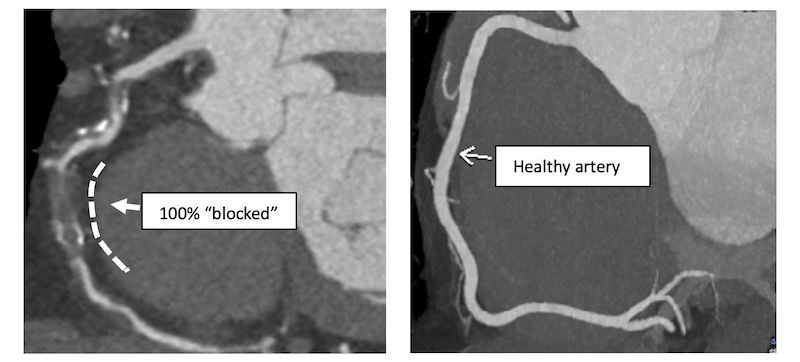Can heart attacks be predicted, and if so, how? Here, DR ROHIT KHURANA, Senior Consultant Cardiologist at The Harley Street Heart and Vascular Centre, writes about the role of cardiac imaging such as CT scans and how it can help predict and prevent heart attacks.
Predicting and preventing heart attacks
It’s not uncommon for a patient to walk into our clinic wanting to know their risk of having a heart attack. Lamentably, the trigger is often a close friend, work colleague or a family member who has suffered an event, or tragically passed away.
Recently, I have noticed that more informed individuals, aware of their family history of heart disease or who are receiving treatment for risk factors such as diabetes or high cholesterol levels, worry about the uncertainty of their own heart health, thus requesting a more in-depth discussion on screening tests. After all, one of the more difficult challenges in modern cardiology is accurately predicting who will have a heart attack.
What are risk calculators?
Heart attacks arise from cholesterol-rich plaque, termed “atheroma”. It deposits on the inner lining of the coronary arteries, the vessels which supply blood to the heart muscle. Traditionally, I use a risk calculator like Framingham, plugging in a patient’s cardiac risk marker data to generate their 10-year predictive risk.
When assessing a person’s risk for coronary heart disease, ageing remains the predominant risk factor, with symptoms typically developing in their 50s and 60s. The 10-year risk result guides me on managing and reducing their prospective risk, primarily through reinforcing healthy lifestyle messages, medications and sometimes implanting stents. Stents are metallic scaffolds implanted into coronary arteries to improve the heart’s blood supply. However, risk models are imperfect.
How cardiac imaging with CT scans works
Individuals do not age at the same rate, and this has led to the concept of “biological age”. Imaging the coronary arteries with CT scanning provides insight into the true burden of atheromatous plaque (an abnormal accumulation of material in the inner layer of an arterial wall). Identified plaque is labelled sub-clinical disease because the individual is not aware of its presence. As plaque ages, it hardens, a process termed “calcification”. CT imaging can easily quantify the calcium burden within a person’s coronary arteries. It also illuminates the presence of calcium-free plaque, which predisposes towards a higher risk of heart attacks than calcium- containing plaques.
The CT coronary calcium score has been extensively validated to be highly predictive of heart attacks. Numerous chronic diseases that are associated with ageing such as diabetes, kidney damage and dementia accelerate plaque calcification. The calcium score is unique in its capacity to integrate lifetime risk factor exposure and genetic susceptibility, serving as a representative surrogate for overall health and biological age, which may differ from calendar age.
Below are images comparing a person with normal “atheroma-free” arteries and one with blockages that require further evaluation and treatment to reduce the risk of a heart attack.
Are there any risks or concerns involved with cardiac imaging?
Imaging your coronary arteries with a CT scan is exceptionally safe, quick, widely accessible and affordable. Insurance coverage is often available, and there’s no concern about claustrophobia in this non-intimidating scanning environment. Modern scanners use algorithms that incur low radiation exposure. As the saying goes, “seeing is believing, and believing is seeing.” You can visit us at our clinic to determine whether this is a test you could benefit from.
The Harley Street Heart and Vascular Centre (Gleneagles Hospital)
#02-38/41 Annexe Block, 6A Napier Road
6472 3703 | harleystreet.sg
This article on heart health and CT scans first appeared in the March 2024 edition of Expat Living. You can purchase the latest issue or subscribe so you never miss a copy!
To make the most of living in Singapore, read our latest City Guide here for free!








